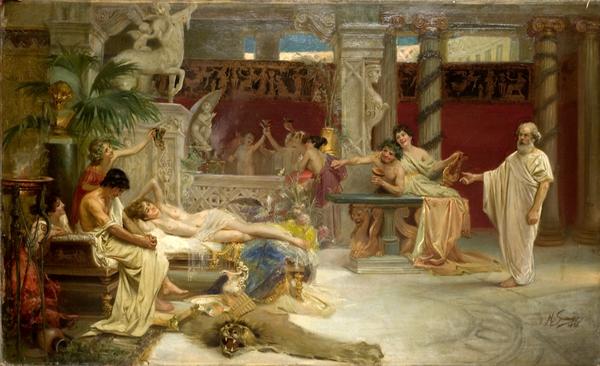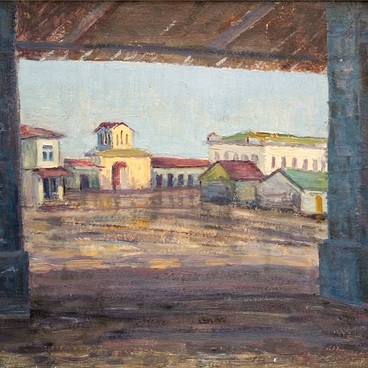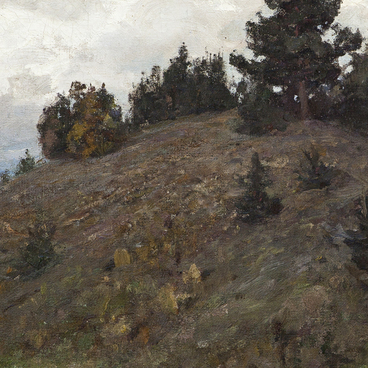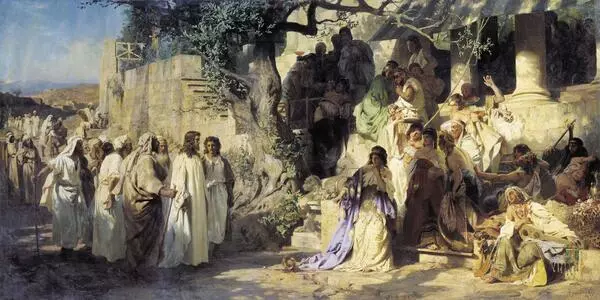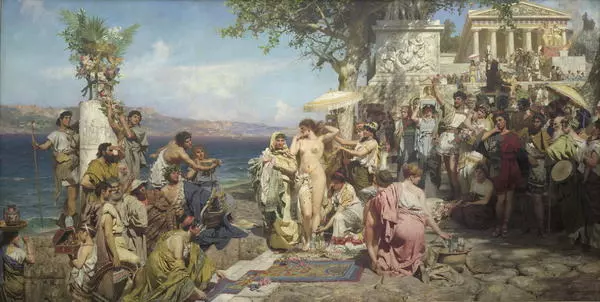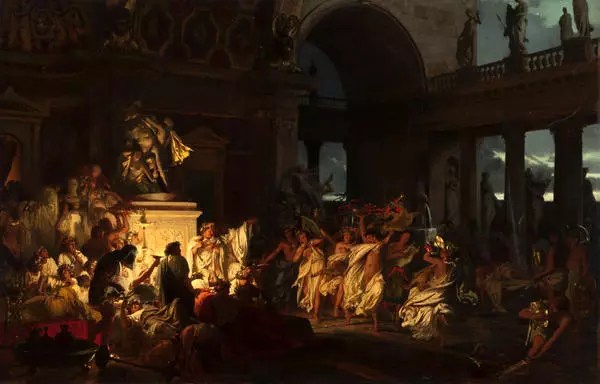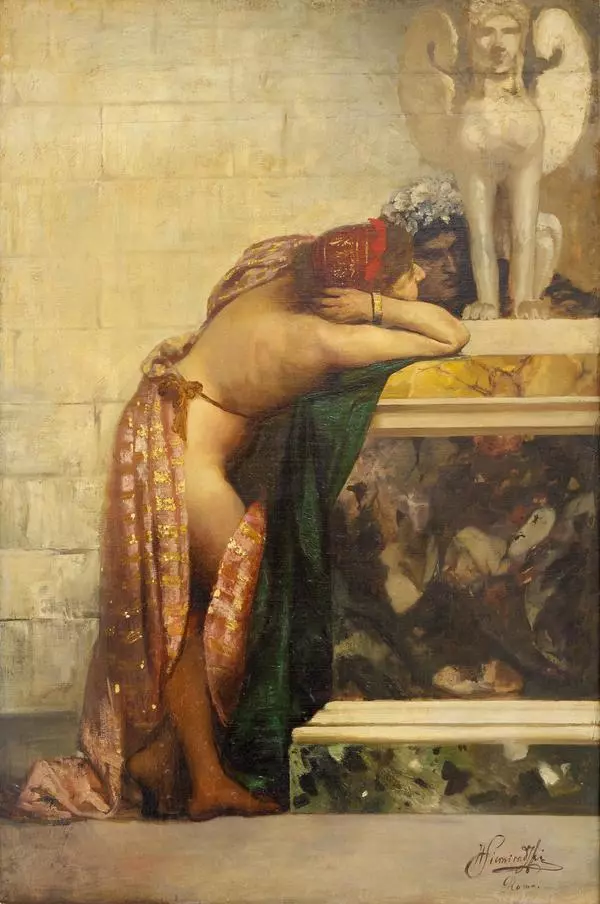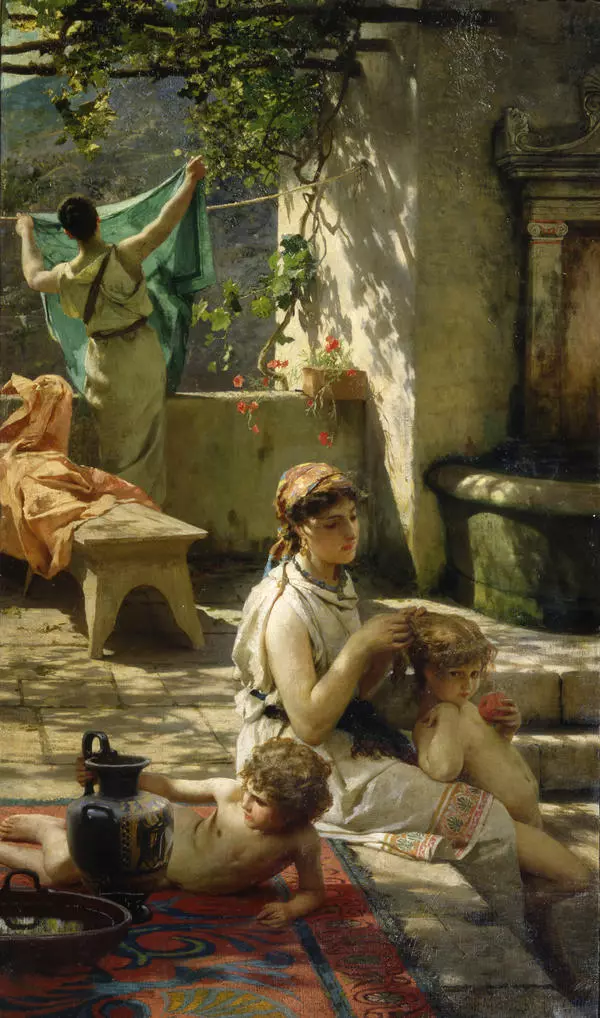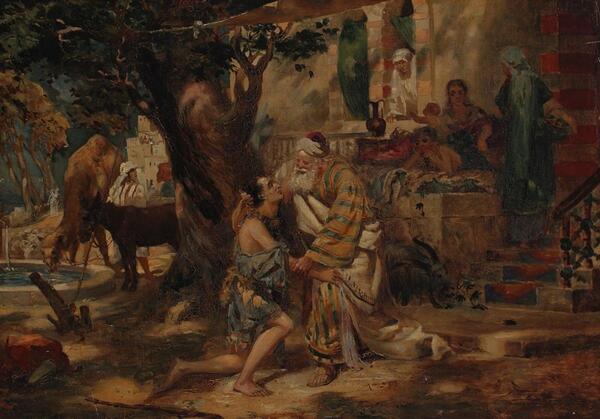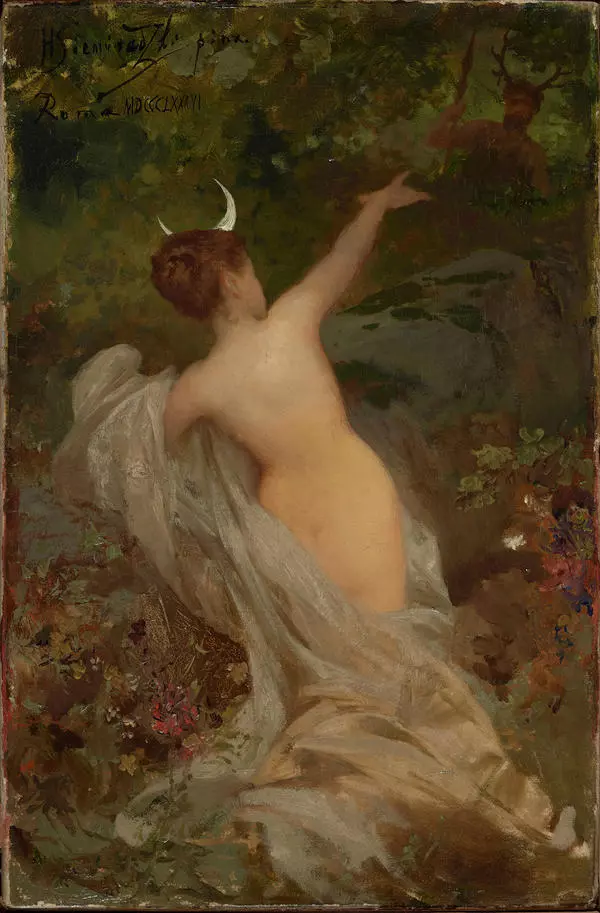The painting by Henryk Siemiradzki, painter of Polish and Russian background, arrived to the Stavropol Museum of Local Lore from the collection of the merchants Alafuzovs. It was titled From Roman life (A Vase or A Woman). After some research undertaken by the museum, the picture turned out to be the author’s repetition of his canvas created in 1868 - Socrates Catches his Disciple Alcibiades at the Hetaera’s. Siemiradzki was awarded with the Small Gold Medal of the Academy of Arts for this work.
The ancient story about hetaeras, Alcibiades and Socrates was known for a long time - from the reliefs on the decorative friezes of the Parthenon. However, it became particularly popular in the European fine arts since the 18th century. Paintings on this theme allegorically illustrate the power that the mind and logic have over material pleasures.
The picture is filled with the antique luxury, which allowed to demonstrate the skillfulness of academic painter Siemiradzki in conveying the texture and materials – the marble of the interior, the fluidity of the fabrics, semi-naked bodies. Along with that the characters are imbued with feelings — we see anger and surprise in Socrates, embarrassment and shame in Alcibiades, who dropped his head on his chest, wry smiles of others.
Henryk Siemiradzki is a brilliant representative of late academic painting, the trend that followed the external forms of classical art of Antiquity and Renaissance. He took interest in a narrow range of subjects — antique, biblical and historical stories. Siemiradzki also painted intimate in style landscapes and portraits. He believed that classical art stood “above the truth”, for which he was severely criticized by the Itinerants.
Siemiradzki’s large-scale canvases were perfectly drawn from the technical point. The artist lived in Italy for a long time and rarely visited Russia, nevertheless the St. Petersburg Academy of Arts awarded him all possible titles in absentia. His works represented Russian art at world exhibitions and regularly received awards. Siemiradzki introduced painterliness and plain-air drawing — work in the open air from life — in the academic tradition. Siemiradzki was a skillful master of creating an atmosphere and spectacular action, he was well versed in all the classical techniques. The academic rhetoric, motives and postures, which became conventional in the 18th century, looked fresh in his paintings.
The ancient story about hetaeras, Alcibiades and Socrates was known for a long time - from the reliefs on the decorative friezes of the Parthenon. However, it became particularly popular in the European fine arts since the 18th century. Paintings on this theme allegorically illustrate the power that the mind and logic have over material pleasures.
The picture is filled with the antique luxury, which allowed to demonstrate the skillfulness of academic painter Siemiradzki in conveying the texture and materials – the marble of the interior, the fluidity of the fabrics, semi-naked bodies. Along with that the characters are imbued with feelings — we see anger and surprise in Socrates, embarrassment and shame in Alcibiades, who dropped his head on his chest, wry smiles of others.
Henryk Siemiradzki is a brilliant representative of late academic painting, the trend that followed the external forms of classical art of Antiquity and Renaissance. He took interest in a narrow range of subjects — antique, biblical and historical stories. Siemiradzki also painted intimate in style landscapes and portraits. He believed that classical art stood “above the truth”, for which he was severely criticized by the Itinerants.
Siemiradzki’s large-scale canvases were perfectly drawn from the technical point. The artist lived in Italy for a long time and rarely visited Russia, nevertheless the St. Petersburg Academy of Arts awarded him all possible titles in absentia. His works represented Russian art at world exhibitions and regularly received awards. Siemiradzki introduced painterliness and plain-air drawing — work in the open air from life — in the academic tradition. Siemiradzki was a skillful master of creating an atmosphere and spectacular action, he was well versed in all the classical techniques. The academic rhetoric, motives and postures, which became conventional in the 18th century, looked fresh in his paintings.

